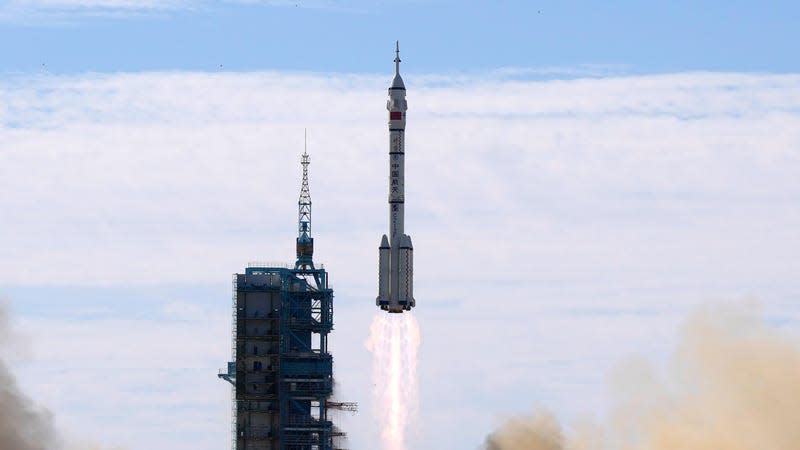After 3 Months in Space, China's Mysterious Spaceplane Ejects Unknown Object

The saga of China’s spaceplane continues as the experimental vehicle just released a mystery object that’s now closely trailing behind in low Earth orbit.
On Monday, the United States Space Force’s 18th Space Defense Squadron tracked an object in a similar orbit to the spaceplane, SpaceNews first reported. The object appeared to be very close to the spaceplane. So close, in fact, that the Space Force unit had to make sure it was a separate object before it was entered into the database as such. The object may have been ejected earlier from the spaceplane, perhaps between October 24 to 30, but it got added to the database on October 31, according to a tweet by Robert Christy from Orbital Focus.
Read more
Jonathan McDowell, an astronomer at the Harvard-Smithsonian Center for Astrophysics, suggested that the released object may be a service module, which houses support systems for its accompanying spacecraft. The object’s recent ejection may be “possibly indicating an upcoming deorbit burn,” McDowell tweeted on Monday. The spaceplane’s orbit forces it to fly over a possible landing site at Lop Nur base in Xinjiang (where China’s first version of spaceplane landed on September 6, 2020) every three days, according to SpaceNews.
The spaceplane may have released other objects shortly after launching this past August. Tracking data from the Space Defense Squadron noted at least one or two objects that may be inspector satellites tracking the spacecraft itself, according to Space News.
If you haven’t been following the orbital journey of the experimental vehicle, here’s a quick recap.
On August 4, China sneakily launched a reusable spacecraft as a classified payload onboard a Long March 2F carrier rocket from the Jiuquan Satellite Launch Center, state media reported at the time. This marked China’s second attempt to test its spaceplane, and it’s now breaking much higher ground. The first test saw the spaceplane stay in orbit for about two days and release a small payload before landing back on Earth. The current spaceplane keeps going strong with three months and counting in orbit, but as McDowell suggests, the mission might be coming to a close.
The experimental vehicle recently raised its low Earth orbit from about 215 by 369 miles (346 kilometers by 593 kilometers) above the surface to a near-circular 371 by 378 miles (597 by 608 km). China’s first spaceplane flew at an altitude of about 206 by 216 miles with a similar inclination (331 by 347 km).
China has shared very little information about its precious spaceplane, simply stating that it would stay in orbit for a “period of time.” The experimental vehicle is a product of the China Academy of Launch Vehicle Technology, a state-owned manufacturer that makes both civilian and military space launch vehicles. Similarly, the U.S. Space Force has its own spaceplane; the Boeing X-37 launched in May 2020 for its sixth test flight and has been in orbit ever since.
As the name suggests, spaceplanes are airplane-spacecraft hybrids operating like regular aircraft in Earth’s atmosphere and orbiting spacecraft once in space. The reusable spacecraft can perform horizontal landings on Earth, similar to a plane landing. If proven successful, spaceplanes could become a useful reusable spacecraft to meet a growing demand from satellites and other missions needing rides to space.
More: China Launched the Final Module for Its Space Station
More from Gizmodo
The Best Shortcuts On Mac: Snap Windows, Text to Speech, and More
How to Delete Your Twitter Account If Elon Musk Was Your Last Straw
Sign up for Gizmodo's Newsletter. For the latest news, Facebook, Twitter and Instagram.

